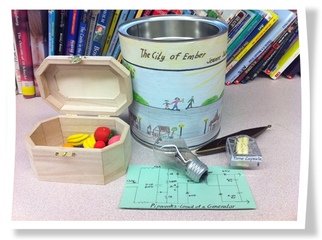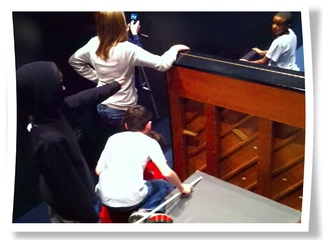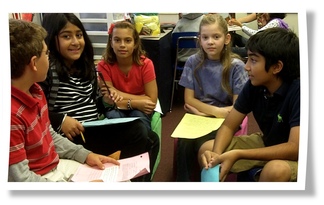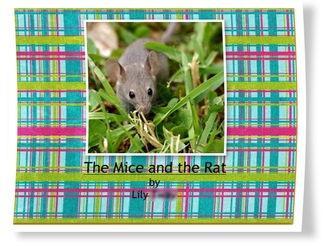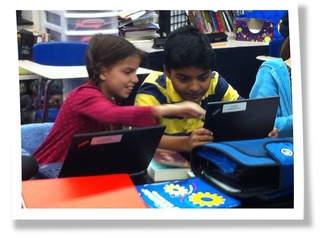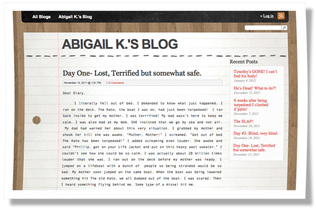Teaching Philosophy
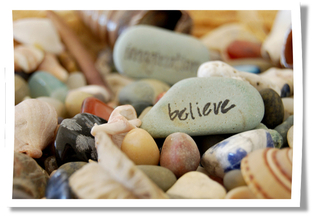
"They may forget what you said
but they will never forget how you made them feel."
--Carol Buchner
As a young person, I didn't envision myself becoming a teacher some day, but I truly feel it is what I was meant to be. I was the shy, quiet child who liked school, but didn't always have confidence in my abilities.
My goal as a teacher is to help my students discover their talents, express themselves creatively, recognize their own learning styles, persevere despite challenges, and feel proud of their accomplishments. The following are some of my core beliefs as a teacher.
My goal as a teacher is to help my students discover their talents, express themselves creatively, recognize their own learning styles, persevere despite challenges, and feel proud of their accomplishments. The following are some of my core beliefs as a teacher.
|
Creativity
I believe creativity is what makes us unique and I strive to incorporate meaningful ways of self-expression into assignments whenever I can. Choice is a big part of this process. Students must know the essential requirements for a project or assignment, but beyond that room for creativity should not only be given but encouraged. I am often surprised by the out-of-the-box thinking and original ideas that surface when students are given the opportunity and try to encourage it more. |
|
Authentic Experiences
I believe students learn best when they see the value and application of what they are learning in the real world. Whenever possible, I try to give my students meaningful experiences in which they can demonstrate their learning in tangible ways. Whether by creating a video that will be shared online or writing a letter that will be mailed to an author, students will often work harder and make deeper connections when they are engaged in authentic learning activities. |
|
Cooperative Learning
I believe that the opportunity to work with peers has tremendous value in the learning process. Cooperative activities allow for scaffolding where students of mixed abilities can support each other in learning goals. The crowdsourcing or asking a group for solutions to a question or problem also can produce a wider variety of thinking than would be generated by students without the ability to collaborate. Social learning also generates a higher level of student engagement and is fun! |
|
Writing as a Process
I believe that writing is a skill that all students can develop and improve. Like an athlete learning to improve his or her game, a writer learns by practice. I enjoy helping demystify the writing process for my students by emphasizing the basics, starting with sentence structure and paragraph development. In class, we model how to generate topic sentences, find supporting details when writing about literature, add sensory and descriptive details when writing creatively, and develop creative ways to end our pieces. The repetition of this process and the additional process of revision is important and helps students develop confidence in their ability to communicate effectively in writing. |
|
Technology as a Tool
I believe that in the 21st century classroom, technology should be an integral part of the teaching model. In my graduate coursework, I have learned about the TPACK framework and have strived to incorporate it into my lesson planning. In the TPACK model, lessons are built around the intersection of pedagogical, content, and technological knowledge. Lessons are not based on technology, but technology supports the content and pedagogical goals of the teacher. Simply put, the teacher first decides the content to be taught, the way they wish to teach it, then decides what technology supports those goals. An example of how I've used this model was in doing character journals with students. My content knowledge was the literature I was teaching (The Cay by Theodore Taylor), my pedagogical activity was to have students write first-person character journals to deepen comprehension (my students wrote from the point of view of Phillip, the main character in The Cay), and my technological knowledge was to use a blog to write and share their journals with the class (we used Kidblog.org). I believe there is a lot of value in this framework and am learning more and more how to incorporate it into my practice. |
Image Source:
Believe. Digital image. Web. 4 Mar. 2012. <http://www.flickr.com/photos/icekitty/2052931999/>.
Believe. Digital image. Web. 4 Mar. 2012. <http://www.flickr.com/photos/icekitty/2052931999/>.
